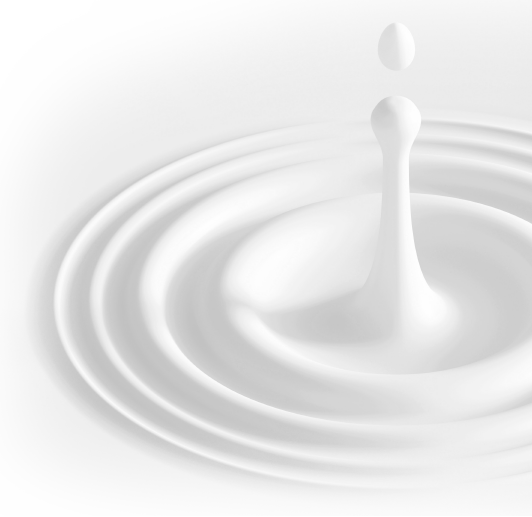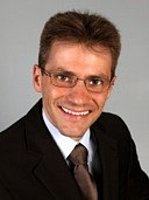ACHEMA Exhibition, 2015 Frankfurt
Day 1, Construction
Construction. Trouble. These are the words, that come to my mind, as I enter the exhibition hall. Wooden cases, ladders, posters, packing materials, technical exhibits everywhere. And noise. Here I’m passing a noisy drill, there someone is hammering. I cannot go through, I have to take a detour. But where is our booth?
It is Sunday morning and I am in Frankfurt at the exhibition ACHEMA. I only had 30 minutes delay in the three-hours long journey. That’s quite good of the railway, isn’t it?
After I had found my way to the enormous exhibition grounds, and had reached the right exhibition hall 9.2, now I am searching for the RESOLV exhibition stand C82. It must be somewhere at the back. I struggle through the junks on the passageways, and I try to remember the design of the stand that I saw in a presentation half a year ago… There it is! I read “RESOLV” on a light banner and think: “Oh, constructed already!” Actually, I came here this early to unpack and set this special eye-catcher together with the stand-builder, so that I could help him and also learn how to do it for next time. But it seems he has already finished it. It looks definitely good from the gangway, and it is also eye-catching from a distance. So: all done well in the design and planning.
Around midday the others are arriving, and life fills the place: the exhibits brought are set up: the differently coated metal sheets, the autoclave, the fuel cells, the nanobalance, and the interactive homogenizer. Monitors are installed, plugged in, and switched on. Brochures displayed, the give-aways arranged, and in the end the stand wiped. Done! At five o’clock the stand quard arrives, we go to the hotel and later in the evening we will go to have something to eat together.
Day 2, Monday, Let’s get started!
Opening Session
There are mainly middle-aged men in dark suits standing around the round bar in the lobby. The atmosphere is relaxed: I frequently hear loud laughters, glimpse into friendly faces, and see warm greetings. The “Opening Session” will shortly begin, so I go to the hall. I like to be there earlier, so that I can secure a good seat on the side for myself. The huge half-round room is filled with blue light, the word “Welcome” can be read on the major screen in a dozen languages, and the quiet background-music creates a nice atmosphere. I sit down and watch how the hall is slowly filled. Do I see Prof. Wolf-Dieter Lukas there, the head of the department “Key Technologies – Research for Innovation” in the Federal Ministry of Education and Research (BMBF)? So I understand: the announced minister Mrs. Wanka will not come.
And now, it all begins. A male and a female dancer, dressed completely in white, give a performance, where they ludically interact with the film that is displayed on the screen. Wow! That looks really great! Judith Rakers comes on stage. She is well-known, among other things, as the spokeswoman of the newscast “Tagesschau”, and she moderates the event at ease and very enjoyably. First of all, the winners of the pupil-competition are awarded. Pupils from class 7 to 11 could participate, and more than 3,000 teams took part in the first turn. 877 of them could then do experiments, and around 550 successful experiment reports were evaluated. 44 of them were awarded with magazines-abos and books. Out of these 44 teams 3 were selected as winners, who will now be introduced. While the teams are standing on stage, the moderator interviews them individually: What was your favourite question? Did something go wrong in your experiment? etc. In some cases it goes really funny.
Moderator: “How often did you use google in the competition to answer the questions?”
Answer: “For every question!” Laughter in the hall.
After honoring the students Stefan Hell comes on stage. Well, I think it’s not necessary to mention that he is one of the three Nobel-price winners for Chemistry in 2014. He gives his speech very amusingly, in which he graphically explains his technique – the STED microscopy – , and also shows photos of the Nobel-price conference and of the subsequent banquet. The STED-microscopy allows us to make images with a light microscope, that are 10 times sharper, than what was possible earlier. And whether you believe it or not, light microscopes are still frequently used today in most scientific publications in the Life Sciences, in spite of the fact that there are electron microscopes, since light microscopes are non-invasive and therefore they allow to get insights into living cells.
Next, Wolf-Dieter Lukas, the department manager in BMBF, speaks. Typically for a politician, he gives a speech without showing any slides. After the great presentation of Mr. Hell, Mr. Lukas has difficulty to pick up the pace. Among other things he speaks about the meaning of the Chemistry branch as “enabling technology”, that enables technical progresses of many other branches in the first place. Since I’ve already heard this argument in many talks about many branches similarly I feel bored and deeply wish that politicians finally start to talk straightly.
Now come the honors with the ACHEMA founder-price. In the “Energy” section a start-up of the RESOLV-partner Fraunhofer-Institut UMSICHT wins. The start-up “Volterion” develops batteries to store photovoltaic energy for domestic use.
The event ends with a short fast-motion video, that shows the construction of the exhibition in the last two weeks, and the people stream out of the hall. It was good, that I sat at the edge, so now I come out as one of the first ones and I can avoid the stream of people. The round bar is filled again, the people are chatting and then they slowly move on to the exhibition halls.
“Meet your friends”-Party
There was a big party in the evening and we got one free ticket. Yep, one. So I go there without knowing anybody. But just how the coincidence wanted, while I was looking for the location I became acquainted with a woman, so we continued searching together. Then, at the entrance came the surprise: I didn’t have an admission ticket.
“You cannot enter without a ticket.” Even my most beautiful smile, with which I tried to impress the reception lady, didn’t count. “But we must have a ticket! Is it maybe deposited somewhere?" I tried the last option. “Oh I see, yes, there is a desk downstairs, you shall inquire there again.” She could have mentioned this right away, couldn’t she? Luckily, the card was on the desk, and it was a nice evening. I chatted with several people, exchanged business cards, danced to live-reggae and rock’n’roll, and enjoyed the splendid warm weather and the great view from the huge roof-terrace, where the whole party took place. I also got to know some people from a Russian company here, who offered me in a discussion on the following day, to give us an access to a microbiological security-bank for six months for free. So: a successful evening.
Day 3 and 4, A completely normal exhibition-madness
To be on the exhibition stand in the morning at half past eight and to look good and smiling the whole day – I will soon be k.o. The weirdly stuffy air in the exhibition hall (despite the air-conditioning) , the constantly high noise level, and the change between unpeopled periods and complete onrushes on our stand claim their tribute. In spite of my determination to go without coffee, I tap the small Senseo-machine for a “Black Magic” all the time.
My nights are correspondingly restless…
Since we take part in the Science Rallye of the stand BMBF as partners, troops of students come frequently by, and they want to know how many atoms the exhibited protein model MMP-14 in reality has (2,690), what we mean by solvation, and what a homogenization process is, by which two in fact immiscible liquids are mixed. Certainly, the exhibited interactive homogenizer is used vigorously for explanation. It’s indeed good that we could close the small leak that cropped up on the first day…
Altogether, the concept of our exhibition stand turned out to be good: the visitors stopped amazed in front of our eye-cather exhibit ("Is it a heart?"), and we got into a conservation with several interesting people. Since we divided the supervision of our stand into shifts of four persons, each of us could quite extensively look around the exhibition. During these excursions we spoke actively to different corporations, and so overall more than fifty contacts came about. We shall see, whether they result in a co-operation…
For me today – on Wednesday evening – it has come to an end. I travel home, and Nina will take my place from tomorrow. So the stand-personell changes once – only Marie and Christopher need to stay until Friday. Keep up!
————————————————————————————————————————————
About the author










